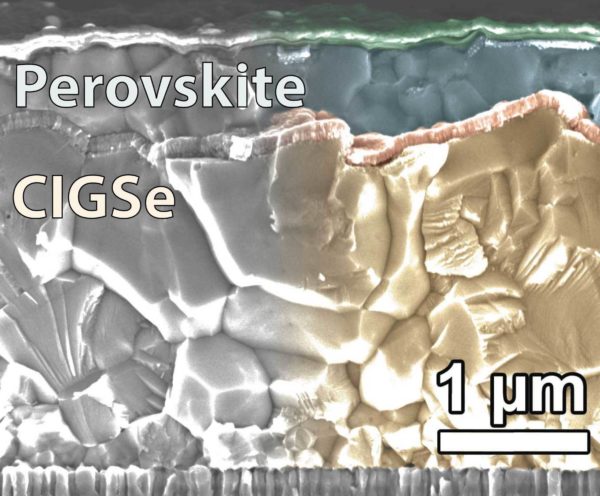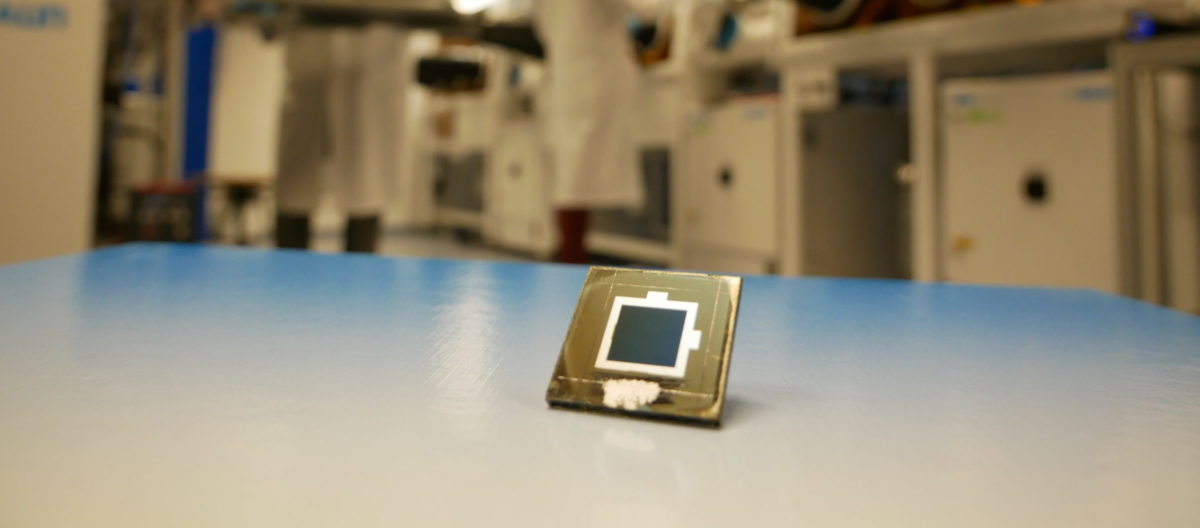Helmholtz Zentrum Berlin (HZB) has set a new efficiency record of 23.26% with a perovskite/CIGS tandem cell measuring 1cm². That represents a significant improvement on the 21.6% achieved by HZB in February.
The new record means tandem cell efficiency is approaching the 23.35% record for a standalone 1cm² CIGS cell set in January by Solar Frontier. If scientists can demonstrate an efficiency gain for the tandem structure over a standalone cell, as has been achieved already with perovskite/silicon tech, the combination could garner significantly more interest.
Belgian research institute imec also achieved 24.6% efficiency with a perovskite/CIGS tandem device last September, with a cell measuring 0.5cm² and featuring a four-terminal structure, thus avoiding losses at the CIGS/perovskite interface.
The HZB record was presented this morning at the EU PVSEC conference in Marseille by scientist Steve Albrecht, who explained one of the key innovations that enabled the achievement was the development of an organic layer between the two cells, which reduced losses at the electrode separating the two active cell layers.
Popular content

Image: HZB
The layer is based on organic carbazole molecules coupled with phosphonic acid and self assembled into a monolayer covering the rough surface of the semiconductors. “The SAMs [self-assembled monolayers] are strikingly simple and robust,” said Amran Al-Ashouri, a PhD student in Albrecht’s team. “This also allows them to be scaled up to industrial levels. In addition, they are compatible to a wide variety of substrates and their material consumption is extremely low.”
The group has filed two patents for innovations within the cell and says it hopes its work will accelerate progress toward viable, low cost perovskite PV technologies.
This content is protected by copyright and may not be reused. If you want to cooperate with us and would like to reuse some of our content, please contact: editors@pv-magazine.com.



1 comment
By submitting this form you agree to pv magazine using your data for the purposes of publishing your comment.
Your personal data will only be disclosed or otherwise transmitted to third parties for the purposes of spam filtering or if this is necessary for technical maintenance of the website. Any other transfer to third parties will not take place unless this is justified on the basis of applicable data protection regulations or if pv magazine is legally obliged to do so.
You may revoke this consent at any time with effect for the future, in which case your personal data will be deleted immediately. Otherwise, your data will be deleted if pv magazine has processed your request or the purpose of data storage is fulfilled.
Further information on data privacy can be found in our Data Protection Policy.